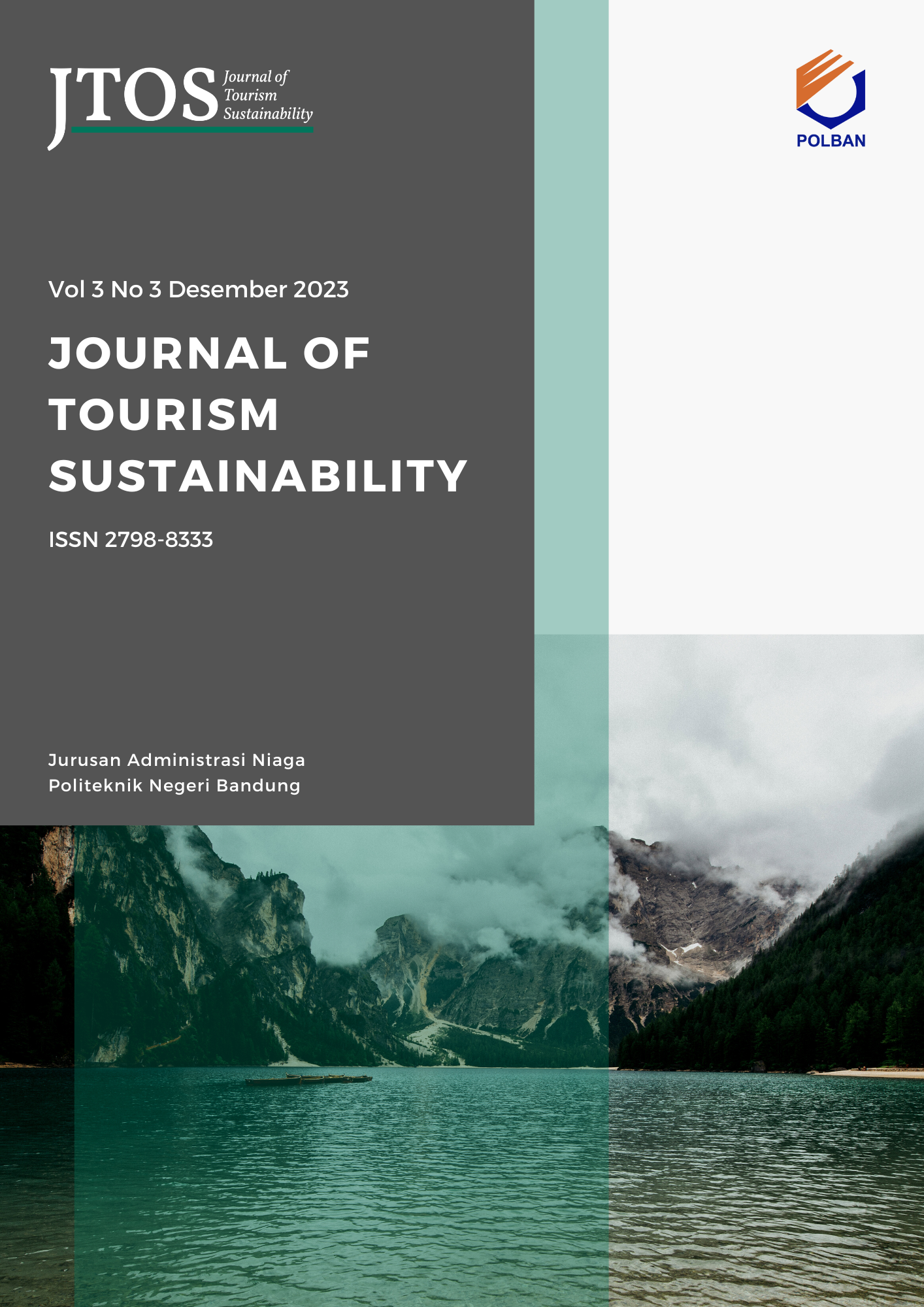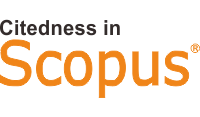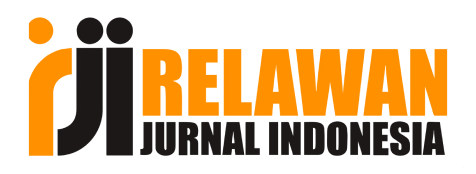Enhancing Festival Event Quality Through Trend-Driven Innovation in Regional Indonesia
DOI:
https://doi.org/10.35313/jtospolban.v5i1.149Keywords:
Festival Event, Event Innovation, Festival Attractiveness, Regional Tourism, Trend-Driven StrategyAbstract
This study investigates the stagnation in the conceptual execution of the Sagarurung Festival in the PALI Regency (Penukal Abab Lematang Ilir), which has remained largely unchanged over time and failed to incorporate contemporary trends and innovations. This lack of novelty has reduced visitor engagement, particularly among the younger demographic. To address this, the research explores how trend-driven innovation, operationalized through four core variables: strong festival atmosphere, harmonious interpersonal interaction, distinct cultural symbols, and rich festival activities, can enhance the attractiveness and quality of regional festivals. A quantitative approach using Structural Equation Modeling (SEM) was employed, with data collected from 285 festival attendees. The analysis revealed a statistically significant influence of a strong festival atmosphere on the three other variables. These findings support the development of a comprehensive event model that integrates emerging trends into local cultural contexts to revitalize festival experiences. Theoretically, this study extends event management literature by introducing trend-driven innovation as a strategic framework for enhancing the relevance and competitiveness of regional festivals. It offers a scalable model that can inform policy and practice in similar socio-cultural settings, contributing to increased tourism and sustained cultural preservation.
References
Chang, F.-H.; Tsai, C.-Y. (2016). Influences of The Cultural Implications and Tourism Attractiveness of Festival Tourism on Tourist Loyalty. J. Bus. Manag. Stud, 2, 1–10.
Creswell. J.W. (1999). Mixed-Method Research: Introduction and Application. Handbook of Educational Policy, 455–472.
Hair J. F., M. S. and C. R. (2017). An Assessment of The Partial Least Squares Structural Equation Modeling in Marketing Research. Journal of Academic Marketing Science.
Iwan, O., & Widiyanto, F. (2018). Strategi Pengembangan Festival Budaya dan Seni Tradisional Dusun Srumbung Gunung. Jurnal Festival, 1–44.
Juraschek, M., Büth, L., Martin, N., Pulst, S., Thiede, S., Juraschek, M., Büth, L., & Martin, N. (2020). Event-based Education and Innovation in Learning Factories – Education and Innovation in Learning Factories – Concept and Evaluation from Hackathon to GameJam Concept and Evaluation from Hackathon to a GameJam. Procedia Manufacturing, 45(2019), 43–48. https://doi.org/10.1016/j.promfg.2020.04.057.
Kotova, L., Máñez Costa, M., Jacob, D., Hewitt, C., Newton, P., Garrett, N., New, S., Parfitt, R., Dunbar, T., Bessembinder, J., Toumi, R., Buonocore, M., Krzic, A., & Terrado, M. (2022). Climateurope Festival: An Innovative Way of Linking Science and Society. Climate Services. https://doi.org/10.1016/j.cliser.2022.100301.
Laing, J. (2018). Festival and Event Tourism Research : Current and Future Perspectives. Tourism Management Perspectives, November 2017, 0–1. https://doi.org/10.1016/j.tmp.2017.11.024
Lee, C.-F.; Huang, H.-I. (2012). The Attractiveness of Taiwan as a Bicycle Tourism Destination: A Supply-Side Approach. J. Tour. Res., 19, 273–299.
Lee, J.; Kyle, G.; Scott, D. (2012). The Mediating Effect of Place Attachment on the Relationship between Festival Satisfaction and Loyalty to the Festival Hosting Destination. J. Travel Res, 51, 754–767.
Li, J., Dai, G., Tang, J., & Chen, Y. (2020). Conceptualizing Festival Attractiveness and Its Impact on Festival Hosting Destination Loyalty: A Mixed Method Approach. Sustainability (Switzerland), 12(8), 3082. https://doi.org/10.3390/SU12083082.
Lian, B., & Harahap, Z. (2021). The Effect of Tourist Objective Photos of Tourist Festival on Sport Tourism (Asian Games) In Palembang, Indonesia Volume 4 No II Tahun 2021 The Effect of Tourist Objective Photos of Tourist Festival on Sport Tourism (Asian Games) In Palembang, Indonesia. https://doi.org/10.31851/hon.v4i2.5644.
Neves, J. M. . (2012). The Attractiveness of Portugal as a Tourist Destination, by Mature Domestic Travellers. World Rev. Entrep. Manag. Sust. Dev., 8, 37–52.
Purchase, S., Kum, C., & Olaru, D. (2016). Paths, Events, and Resource Use: New Developments in Understanding Innovation Processes. Industrial Marketing Management, 58, 123–136. https://doi.org/10.1016/j.indmarman.2016.05.020.
Rihova, I.; Buhalis, D.; Moital, M.; Gouthro, M.-B. (2015). Conceptualising Customer-to-Customer Value Co-Creation in Tourism. Int. J. Tour. Res., 17, 356–363.
Schivinski, B., & Dabrowski, D. (2015). The Impact of Brand Communication on Brand Equity through Facebook. Journal of Research in Interactive Marketing, 9(1), 31–53. https://doi.org/10.1108/JRIM-02-2014-0007.
Seligman, M. (2011). No Title. Flourish. New York, NY: Free Press.
Sun, Y., Ding, D., Dong, H., & Liu, H. (2021). Event-Based Resilient Filtering for Stochastic Nonlinear Systems via Innovation Constraints. Information Sciences, 546, 512–525. https://doi.org/10.1016/j.ins.2020.08.007.
Wijanto, S. H. (2016). Structural Equation Modeling Lisrel 8.8. In Yogyakarta: Graha Ilmu.
Winangoen, G., Klaten, K., & Tengah, J. (2020). Jurnal Inovasi Penelitian. 1(6).
Downloads
Published
Issue
Section
License
Copyright (c) 2025 Handika Fikri Pratama, Muh Yahyaddin, Muhmmad Iqbal, Ahmad Kurniawan, Rahmi Fadhela, Budi Wibowo, Suhairi Hazisma

This work is licensed under a Creative Commons Attribution-NonCommercial-ShareAlike 4.0 International License.



.png)

















